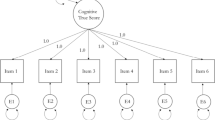Abstract
Strong orthogonal arrays (SOAs) were recently introduced and studied as a class of spacefilling designs for computer experiments. To surely realize better space-filling properties, SOAs of strength three or higher are desirable. In addition, orthogonality is also an important property for designs of computer experiments, because it guarantees that the estimates of the main effects are uncorrelated. This paper first provides a systematic study on the construction of (nearly) orthogonal strength-three SOAs with better space-filling properties. The newly proposed strength-three SOAs enjoy almost the same space-filling properties of strength-four SOAs, and can accommodate much more columns than the latter. Moreover, they are (nearly) orthogonal and flexible in run sizes. The construction methods are straightforward to implement, and their theoretical supports are well established. In addition to the theoretical results, many designs are tabulated for practical needs.
Similar content being viewed by others
References
Santner T J, Williams B J, and Notz W I, The Design and Analysis of Computer Experiments, 2nd Edition, Springer, New York, 2018.
Fang K T, Li R, and Sudjianto A, Design and Modeling for Computer Experiments, Chapman and Hall/CRC, New York, 2005.
Moon H, Dean A M, and Santner T J, Two-stage sensitivity-based group screening in computer experiments, Technometrics, 2012, 54: 376–387.
Woods D C and Lewis S M, Design of experiments for screening, Handbook of Uncertainty Quantification, Eds. by Ghanem R, Higdon D, and Owhadi H, Springer, New York, 2016.
Kleijnen J P, Design and analysis of simulation experiments: Tutorial, Advances in Modeling and Simulation, Eds. by Tolk A, Fowler J, Shao G, et al., Springer, New York, 2017.
Wu C F J and Hamada M S, Experiments: Planning, Analysis, and Optimization, 3rd Edition, Wiley, New York, 2021.
Joseph V R, Gul E, and Ba S, Maximum projection designs for computer experiments, Biometrika, 2015, 102: 371–380.
Sun F, Wang Y, and Xu H, Uniform projection designs, Ann. Statist., 2019, 47: 641–661.
McKay M, Beckman R, and Conover W, A comparison of three methods for selecting values of input variables in the analysis of output from acomputercode, Technometrics, 1979, 21: 239–245.
Tang B, Orthogonal array-based Latin hypercubes, J. Amer. Statist. Assoc., 1993, 88: 1392–1397.
Qian P Z G, Nested Latin hypercube designs, Biometrika, 2009, 96: 957–970.
Qian P Z G, Sliced Latin hypercube designs, J. Amer. Statist. Assoc., 2012, 107: 393–399.
Xie H, Xiong S, Qian P Z G, et al., General sliced Latin hypercube designs, Statist. Sinica, 2014, 24: 1239–1256.
Yang J, Liu M Q, and Lin D K J, Construction of nested orthogonal Latin hypercube designs, Statist. Sinica, 2014, 24: 211–219.
Steinberg D M and Lin D K J, A construction method for orthogonal Latin hypercube designs, Biometrika, 2006, 93: 279–288.
Bingham D, Sitter R R, and Tang B, Orthogonal and nearly orthogonal designs for computer experiments, Biometrika, 2009, 96: 51–65.
Sun F, Liu M Q, and Lin D K J, Construction of orthogonal Latin hypercube designs, Biometrika, 2009, 96: 971–974.
Lin C D, Mukerjee R, and Tang B, Construction of orthogonal and nearly orthogonal Latin hypercubes, Biometrika, 2009, 96: 243–247.
Lin C D, Bingham D, Sitter R R, et al., A new and flexible method for constructing designs for computer experiments, Ann. Statist., 2010, 38: 1460–1477.
Ai M, He Y, and Liu S, Some new classes of orthogonal Latin hypercube designs, J. Statist. Plann. Inference, 2012, 142: 2809–2818.
Georgiou S D and Efthimiou I, Some classes of orthogonal Latin hypercube designs, Statist. Sinica, 2014, 24: 101–120.
Sun F and Tang B, A method of constructing space-filling orthogonal designs, J. Amer. Statist. Assoc., 2017, 112: 683–689.
Wang L, Sun F, Lin D K J, et al., Construction of orthogonal symmetric Latin hypercube designs, Statist. Sinica, 2018, 28: 1503–1520.
He Y and Tang B, Strong orthogonal arrays and associated Latin hypercubes for computer experiments, Biometrika, 2013, 100: 254–260.
Liu H and Liu M Q, Column-orthogonal strong orthogonal arrays and sliced strong orthogonal arrays, Statist. Sinica, 2015, 25: 1713–1734.
Zhou Y and Tang B, Column-orthogonal strong orthogonal arrays of strength two plus and three minus, Biometrika, 2019, 106: 997–1004.
Li W, Liu M Q, and Yang J F, Column-orthogonal nearly strong orthogonal arrays, J. Statist. Plann. Inference, 2021, 215: 184–192.
Li W, Liu M Q, and Yang J F, Construction of column-orthogonal strong orthogonal arrays, Statist. Papers, 2022, 63: 515–530.
He Y and Tang B, A characterization of strong orthogonal arrays of strength three, Ann. Statist., 2014, 42: 1347–1360.
Shi C and Tang B, Construction results for strong orthogonal arrays of strength three, Bernoulli, 2020, 26: 418–431.
Hedayat A S, Sloane N J A, and Stufken J, Orthogonal Arrays: Theory and Applications, Springer, New York, 1999.
Wang C, Yang J, and Liu M Q, Construction of strong group-orthogonal arrays. Statist. Sinica, 2022, 32: 1225–1243.
Author information
Authors and Affiliations
Corresponding author
Ethics declarations
The authors declare no conflict of interest.
Additional information
This work was supported by the National Natural Science Foundation of China under Grant Nos. 12131001 and 12226343, the MOE Project of Key Research Institute of Humanities and Social Sciences under Grant No. 22JJD110001, and the National Ten Thousand Talents Program of China.
Rights and permissions
About this article
Cite this article
Wang, C., Liu, MQ. & Yang, J. A New Class of Strong Orthogonal Arrays of Strength Three. J Syst Sci Complex 37, 1233–1250 (2024). https://doi.org/10.1007/s11424-023-3093-9
Received:
Revised:
Published:
Issue Date:
DOI: https://doi.org/10.1007/s11424-023-3093-9




